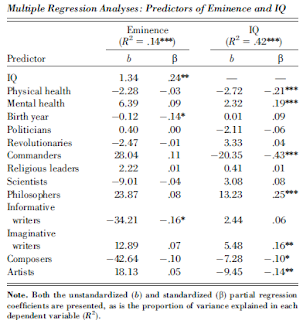Our results show that within a representative UK population sample there was a weak nominally significant association between burden of autosomal runs of homozygosity and higher non-verbal cognitive ability. This nominal association with increased cognitive ability is counterintuitive when compared with the results from more extreme inbreeding based on pedigree information.1, 2, 3 A potential explanation for this direction of effect is that individuals with higher cognitive ability might show greater positive assortative mating, which would lead to increased homozygosity at loci for higher cognitive ability in their offspring. However, in a separate sample we showed that greater positive assortative mating was not associated with higher cognitive ability. While these findings seem to provide clear evidence against this hypothesis, it is possible that the genome-wide genetic findings reflect historical mating habits that no longer exist today. It should also be noted that there was a reduction in the standard deviations for spousal correlations in the increased cognitive ability groups by an average of 6% compared with the decreased cognitive ability group (see Table 3), which could reflect lesser genetic variability in the high ability couples or a ceiling effect on the cognitive tests. This lesser phenotypic variability at the high ability end would have a small effect in reducing the spouse correlations and potentially confound our analysis.
Genetic variants were found to have a slight (though significant) reduction in minor allele frequency across the genome in individuals in the top quartile of general cognitive ability compared with those in the bottom quartile (means of 21823 and 21824), which in turn could lead to increased homozygosity by chance. This could indicate that these individuals descend from subtly different ancestral populations that experienced loss of variation. This difference in ancestry may be correlated with either genetic variants for improved cognitive ability, or with social or environmental backgrounds that lead to higher cognitive ability, though our analysis of FROH corrected for socio-economic status and population stratification. Another potential explanation is that the reduced minor allele frequency in the high cognitive ability is reflective of the less frequent allele being deleterious due to selection against it. As a result, these high-functioning individuals could benefit from having more major alleles at fixation and a reduced burden of rarer deleterious variants.
Overall, these results highlight the importance of understanding mating habits, such as inbreeding and assortative mating, when investigating the genetic architecture of complex traits such as cognitive ability. The results certainly suggest that there is no large effect of FROH on reduced cognitive ability, the expected direction of effect. The nominally significant associations found in this study may even suggest that in the case of non-verbal cognitive ability, beneficial associations with homozygosity at specific loci might outweigh the negative effects of genome-wide inbreeding and that the relationship between inbreeding and cognitive ability may be more complicated than previously thought.European Journal of Human Genetics , (17 July 2013) | doi:10.1038/ejhg.2013.155
Genome-wide estimates of inbreeding in unrelated individuals and their association with cognitive ability
Robert A Power et al.
The consequence of reduced cognitive ability from inbreeding has long been investigated, mainly restricted to cousin–cousin marriages. Molecular genetic techniques now allow us to test the relationship between increased ancestral inbreeding and cognitive ability in a population of traditionally unrelated individuals. In a representative UK sample of 2329 individuals, we used genome-wide SNP data to estimate the percentage of the genome covered by runs of homozygous SNPs (ROH). This was tested for association with general cognitive ability, as well as measures of verbal and non-verbal ability. Further, association was tested between these traits and specific ROH. Burden of ROH was not associated with cognitive ability after correction for multiple testing, although burden of ROH was nominally associated with increased non-verbal cognitive ability (P=0.03). Moreover, although no individual ROH was significantly associated with cognitive ability, there was a significant bias towards increased cognitive ability in carriers of ROH (P=0.002). A potential explanation for these results is increased positive assortative mating in spouses with higher cognitive ability, although we found no evidence in support of this hypothesis in a separate sample. Reduced minor allele frequency across the genome was associated with higher cognitive ability, which could contribute to an apparent increase in ROH. This may reflect minor alleles being more likely to be deleterious.
Link

.png)
